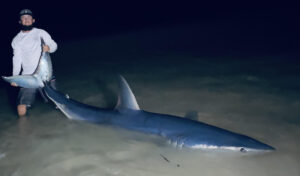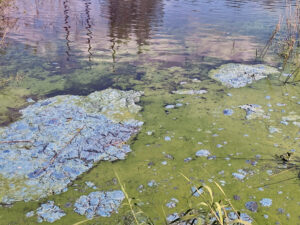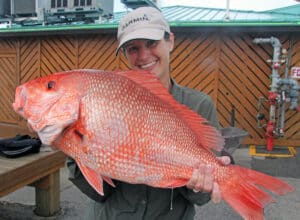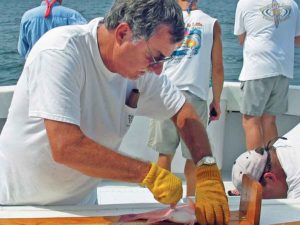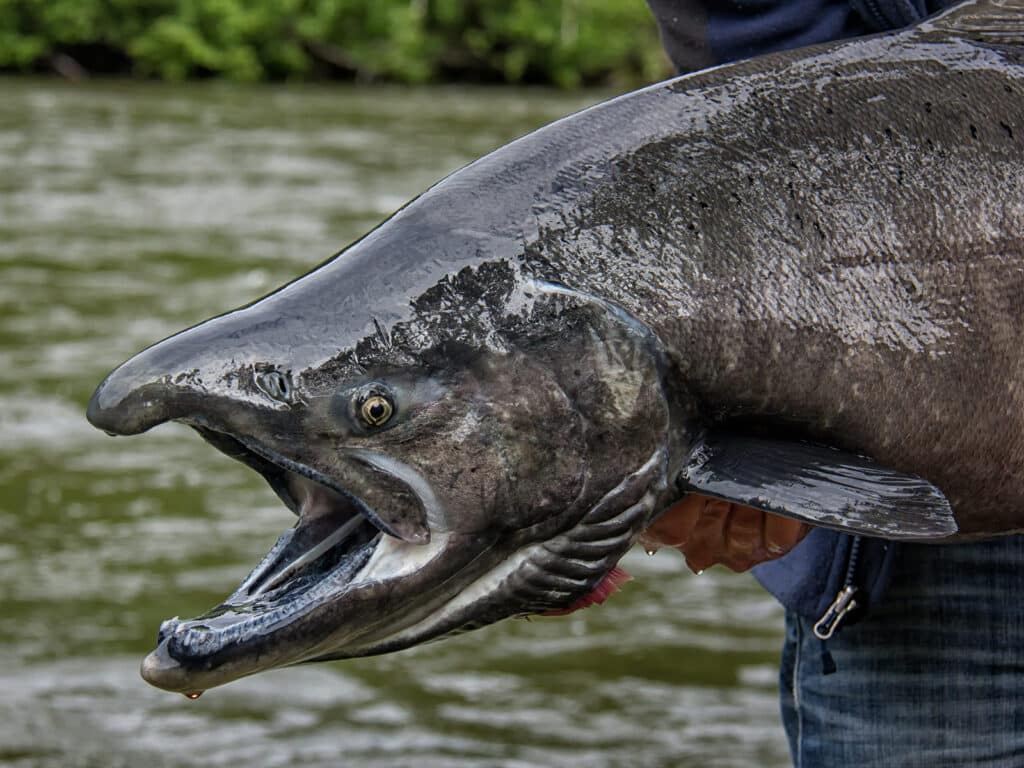
“In a state where I can go to jail for not taking enough meat off the ribs of a moose I hunt, or I can receive a ticket for taking a king salmon out of the water if I catch one while trout fishing, Alaska’s ‘Big Trawl’ has been documented chucking dead bycatch over the side of their boats. This action by commercial trawlers is completely legal under current regulations.” — Cody McLaughlin
Alaskan Bycatch By The Numbers
What is bycatch? For the uninitiated, it’s when a fisherman catches a fish species they didn’t intend to or, in the case of factory fishing vessels, can’t sell and have to discard. According to NOAA’s website, “Bycatch is a complex, global issue that threatens the sustainability and resiliency of our fishing communities, economies, and ocean ecosystems.”
The group of commercial trawlers in Alaska, what I call “Big Trawl,” produce millions of pounds of bycatch each season. We’re talking wasted and dead iconic gamefish such as halibut and salmon, species that have enormous economic value to local communities and recreational anglers.
FACT: Since 1991, 1,774,800 king salmon have been documented as trawl bycatch in Alaska. To break it down further, 1,117,800 of those fish came from the Bering Sea/Aleutian Islands (BSAI) and 657,000 of them came from the Gulf of Alaska (GOA). This data was compiled from weekly bycatch reports.
It is important to note that those numbers are just observed bycatch — and only 15 percent of bycatch is observed on these vessels. Estimates of complete trawl bycatch are likely 10 times higher than current documented numbers. That’s because trawl regulators don’t factor in unobserved bycatch — all the fish, crab, plants, coral and marine life mowed down by the net that doesn’t make it to the surface to be tallied. Currently, regulators slot in “0” for unobserved bycatch.
In addition to king salmon’s observed bycatch, Big Trawl in Alaska has reported wasting 141 million pounds of bycatch per year over the last 10 years. The numbers don’t lie — commercial fishing operators throw away millions of pounds of fish every season. And its harmful effects are staggering. On the other hand, recreational anglers continue to see their seasons shortened in efforts to save salmon and halibut populations. The difference in how commercial and recreational sectors are managed is maddening.
A Quick Halibut Fishing Comparison
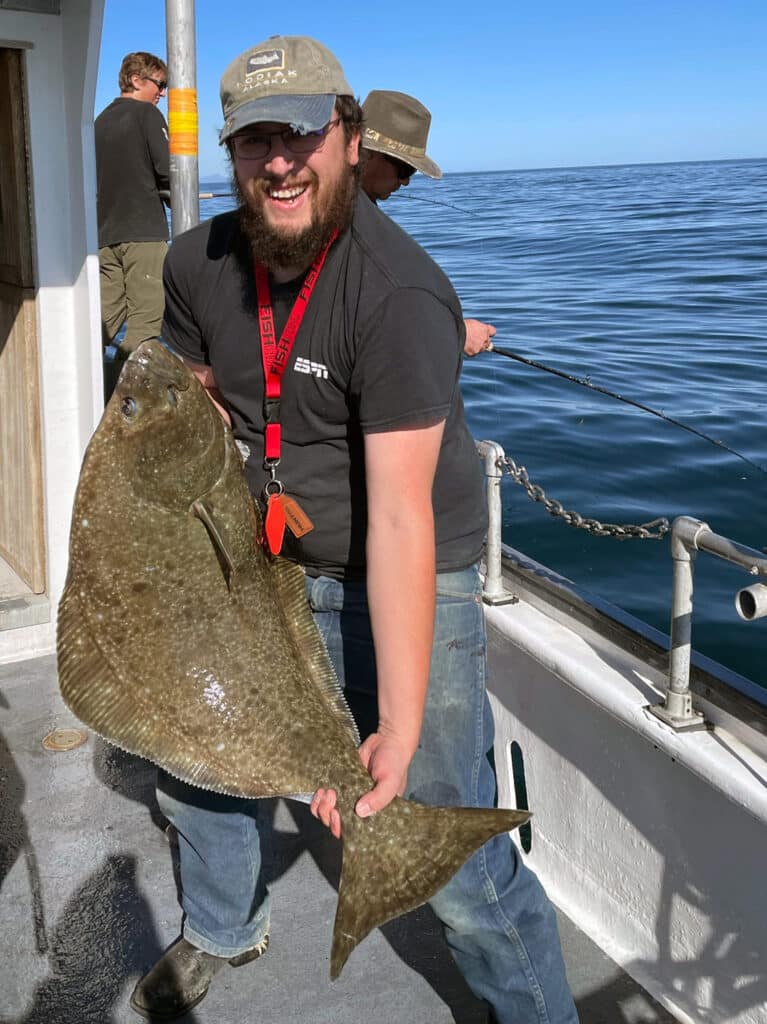
For context, charter boats in Southcentral Alaska can’t keep halibut on certain Tuesdays or Wednesdays from June to August to help save the resource. And there’s been minimal howling from the small-business sportfishing operators. The entire Southcentral sport charter halibut quota for 2023 is 1.89 million pounds.
Meanwhile, Big Trawl has already dumped 3.14 million pounds of halibut as bycatch year-to-date in 2023. As of late June, they’ve shoveled over the sides of their vessels nearly double the quota for the entire sportfishing fleet. Plus, trawlers are still allowed to fish in designated halibut nursery areas of the Bering Sea, places where everyone else is banned from halibut fishing in order to protect young fish.
A Weak Response By Regulators Angers Fishermen
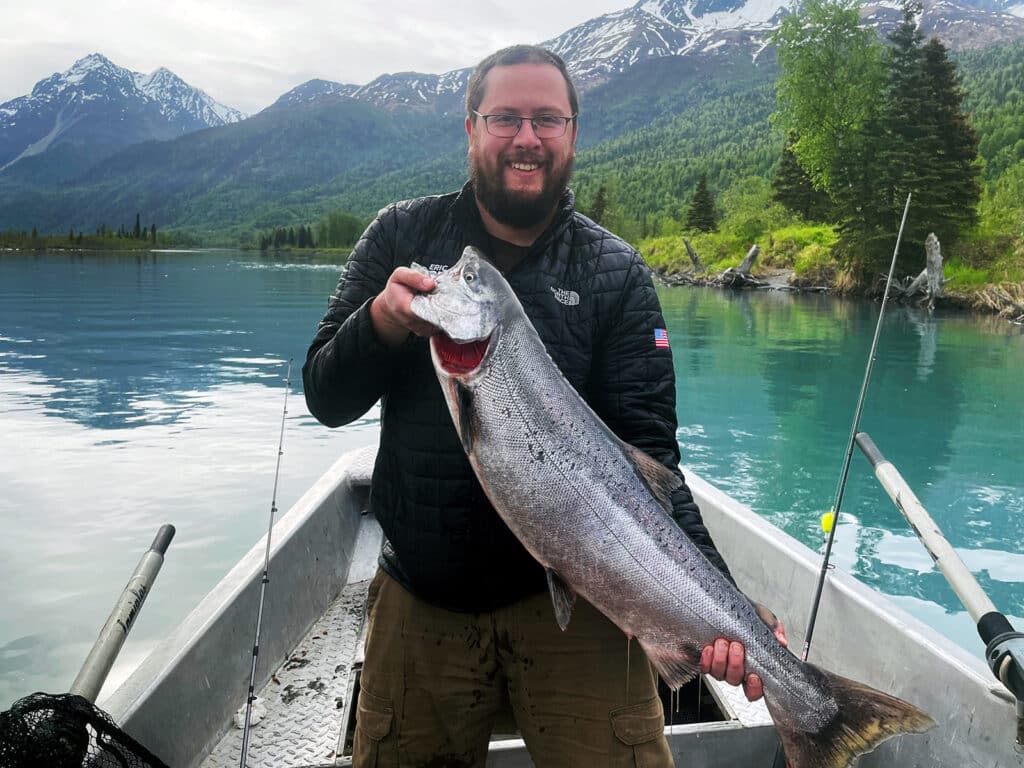
Salmon numbers are down at an alarming rate. Where do regulators fall on the issue? In a move many see as too little and too late, federal fisheries managers created a Federal Research Task Force to find the cause of the decline.
Sport fishermen have taken it on the chin through all this. We’re entering the second summer with the legendary Kenai River closed to king salmon fishing. This fabled river fishery is synonymous with the king salmon species. The current IGFA all-tackle record chinook is 97 pounds, 4 ounces, caught on this river in May 1985 by angler Les Anderson. In 2009, a potential replacement world record was caught and released on the same river.
Other world-class fisheries in Alaska also saw increased regulations. The Yukon and Kuskokwim rivers are both closed to subsistence fishermen who depend on the resource for food security. King salmon retention in lower Cook Inlet was reduced from 2 to 1 on March 2, before the run even started. The fishery was later closed in all Cook Inlet salt waters. On top of all of this, at least one misguided environmental group is asking that chinook salmon receive endangered status over crashing stocks, after succeeding in stopping trolling efforts in Southeast Alaska because endangered orcas. (A U.S. appeals court eventually halted the lower court ruling, allowing the trolling season to start on July 1.)
Citizen anglers are finally taking a stand. The STOP Alaskan Trawler Bycatch Facebook page just reached the 25,000 member milestone in recent weeks and receives support from conservation groups in the state. You can also directly support organizations such as the Alaska Outdoor Council, fighting these issues on the ground. In addition, Salmon State has started a helpful “stop bycatch” take-action tool for concerned anglers.
Cheap Protein for China at the Expense of Iconic Fish
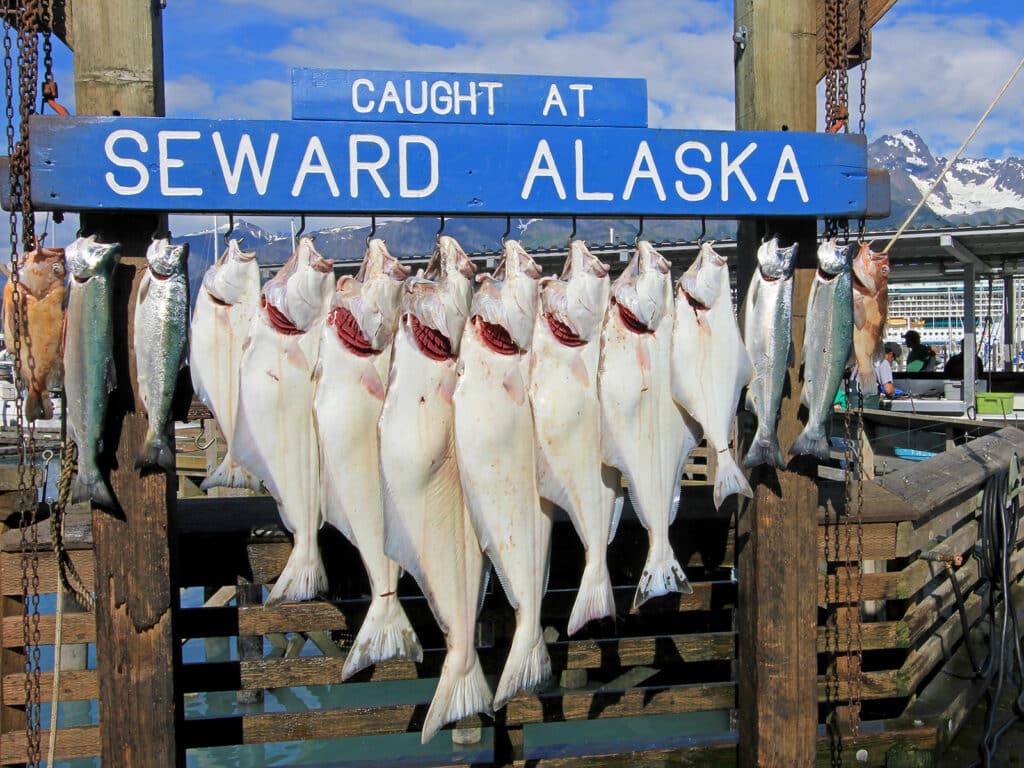
What’s the driving force behind commercial trawlers? How can cheap pollock take precedence over salmon or halibut? (Salmon costs consumers a whopping $20 to $40 per pound in the grocery store!) In a word? China. The Amendment 80 bottom trawl fleet is the top halibut bycatch offender. All participants in that fleet are registered in Seattle, with more than 80 percent of their catch going directly to China for cheap protein. They also ship $45 per ounce pollock roe caviar over for China’s growing population of billionaires. The rest, essentially, goes to McDonald’s as Filet-O-Fish sandwiches. McDonald’s claims its fish are 99 percent sustainably caught, and the pollock fishery might be doing fine, but the bycatch fisheries are cratering.
So what’s the recourse? In short, anglers and conservationists concerned about this issue need to let policyholders know where they stand. The North Pacific Fisheries Management Council (NPFMC) has the power to stop this. Congress needs to consider acting, and it will take more than just Alaska’s representatives to get this done. That means contacting your state’s federal representatives to let them know the waste and destruction of Alaskan salmon and halibut fisheries is unacceptable.
Lastly, the governors of Alaska and Washington (where the trawl fleets are regulated) have influence here, especially over the makeup of the NPFMC and the future direction of commercial fishing. Both states are sportfishing destinations. The sportfish wasted by commercial trawlers negatively impacts the economies of these states. Visiting anglers will not bring their tourism dollars if there are no salmon.
As I have said on more than one podcast this month, this issue deserves every angler’s attention. Commercial trawlers catch or waste the majority of king salmon while recreational anglers continue to get pushed out of fishing opportunities. If you’re looking to catch a wild king salmon, you should hop on a plane to Alaska in the next five years before these historically mighty runs of fish disappear.
About the Author: Cody McLaughlin is a noted conservationist covering public policy issues related to hunting, fishing and the environment. He currently serves on the board of the Alaska Outdoor Council and is a former board member and lead spokesman of the New Jersey Outdoor Alliance, representing the state’s 1.2 million sportsmen. McLaughlin recently launched Trout Stream Studios as an executive producer for podcasts and livestreams in the hunting and veterans’ affairs spaces.

